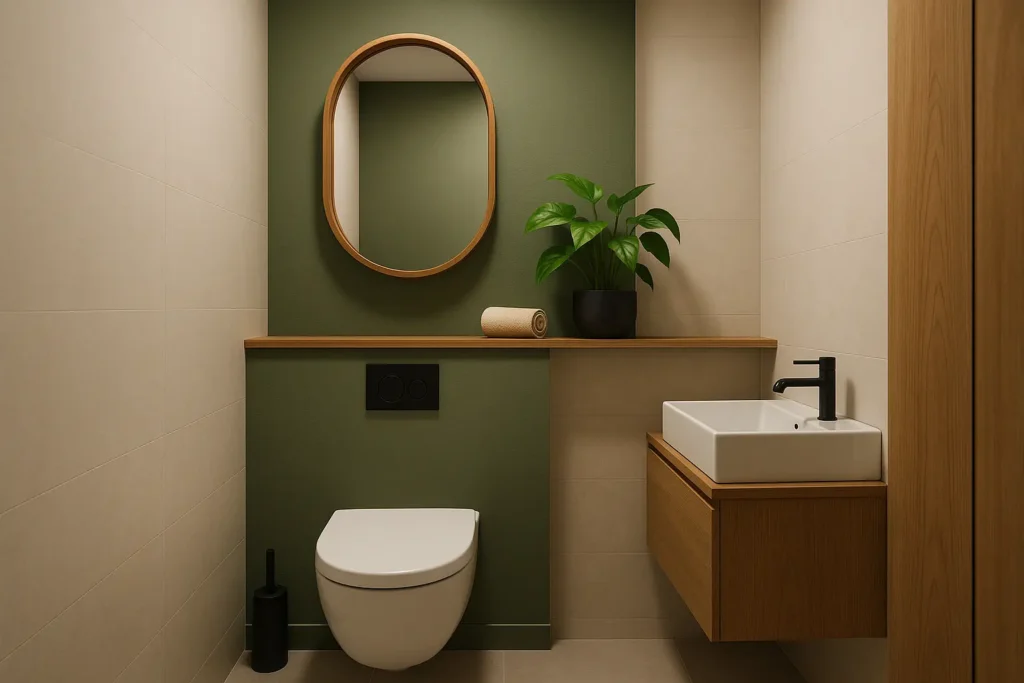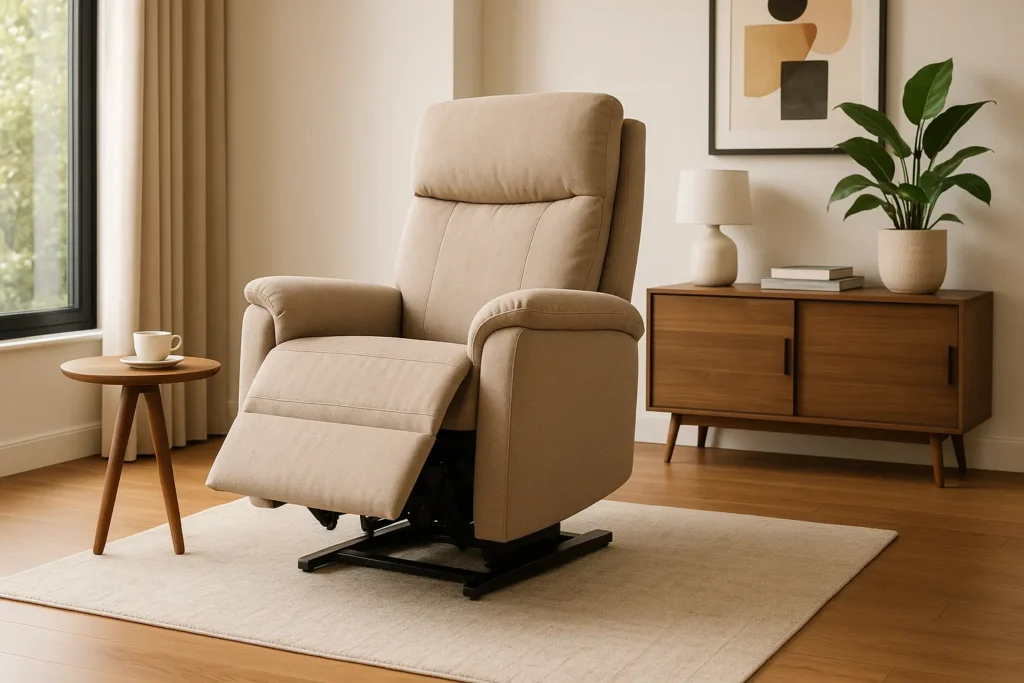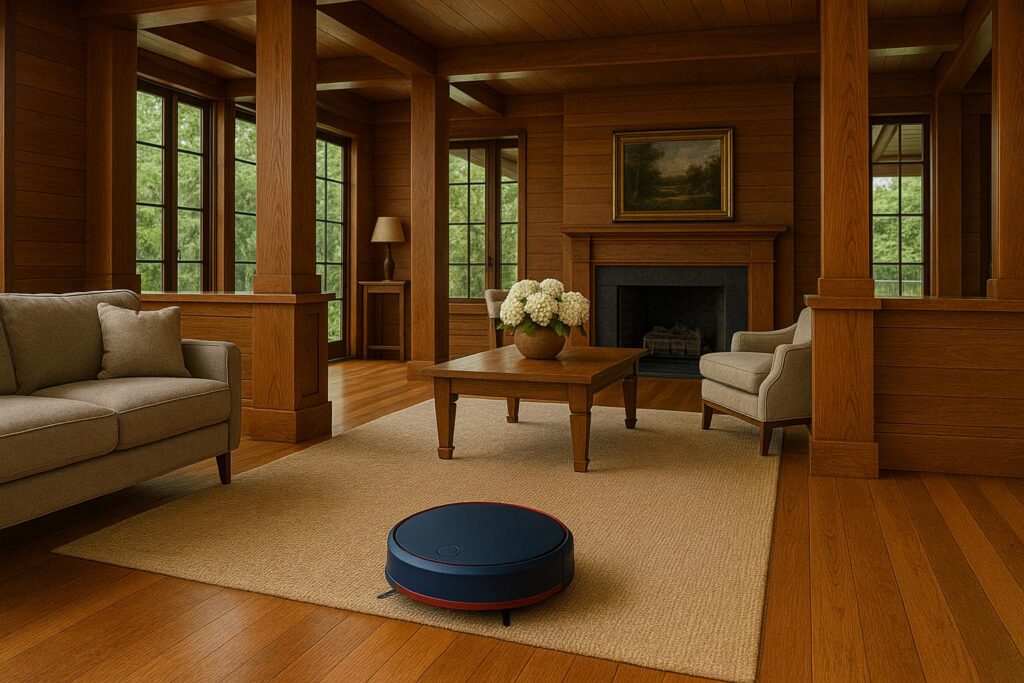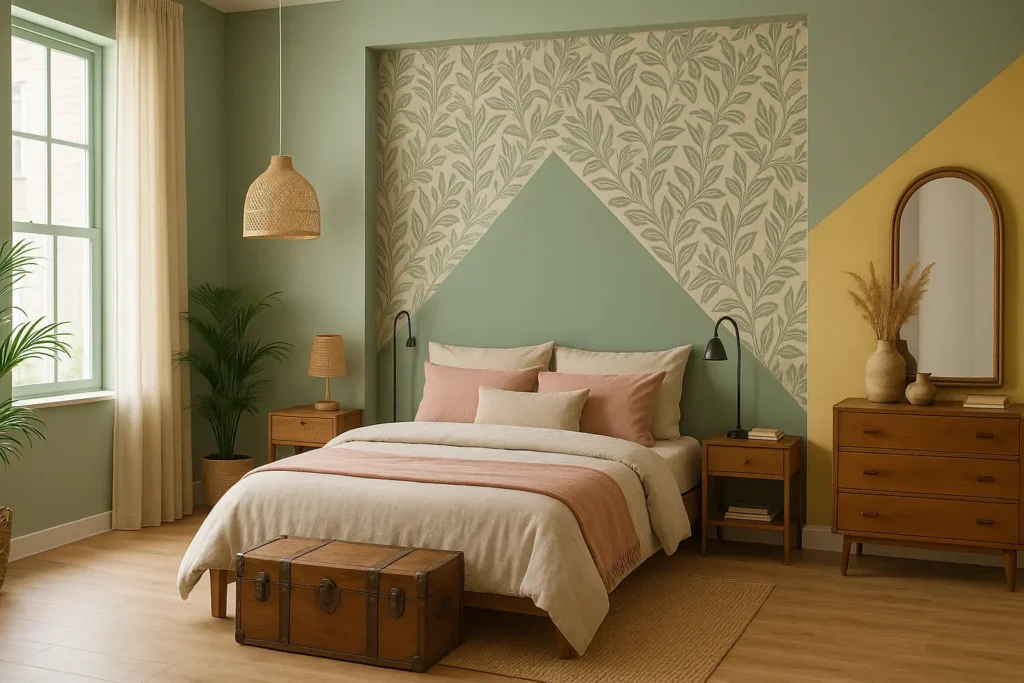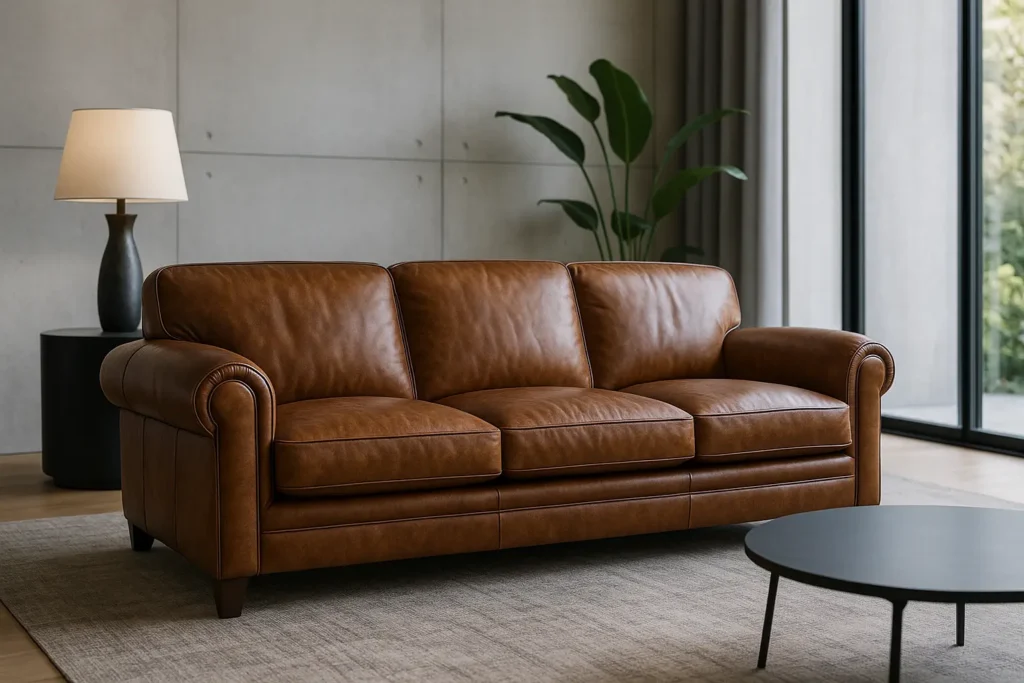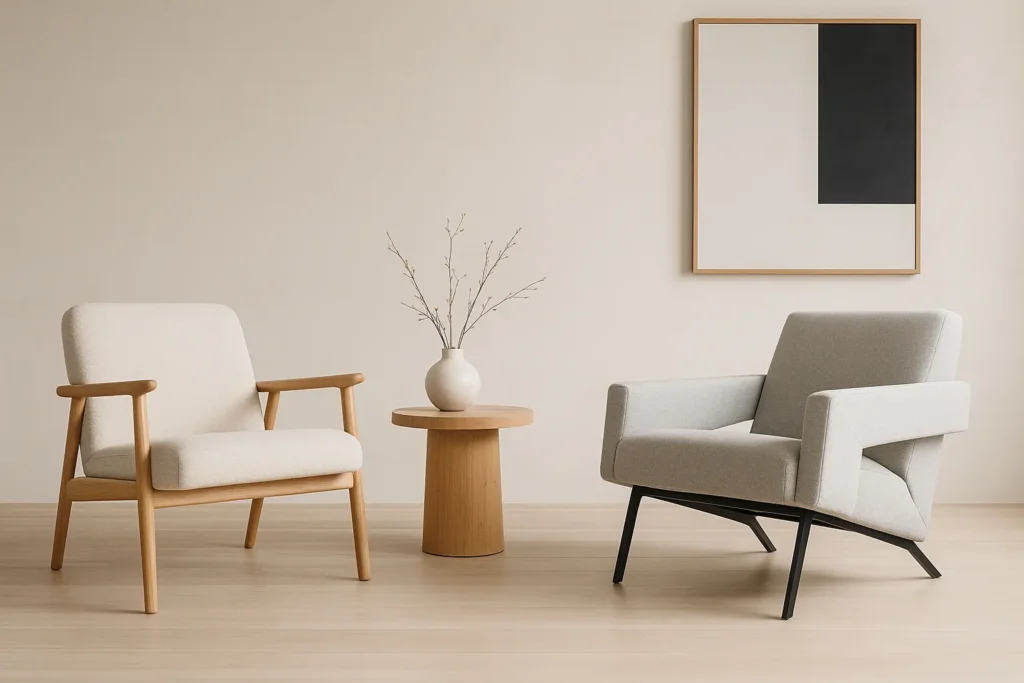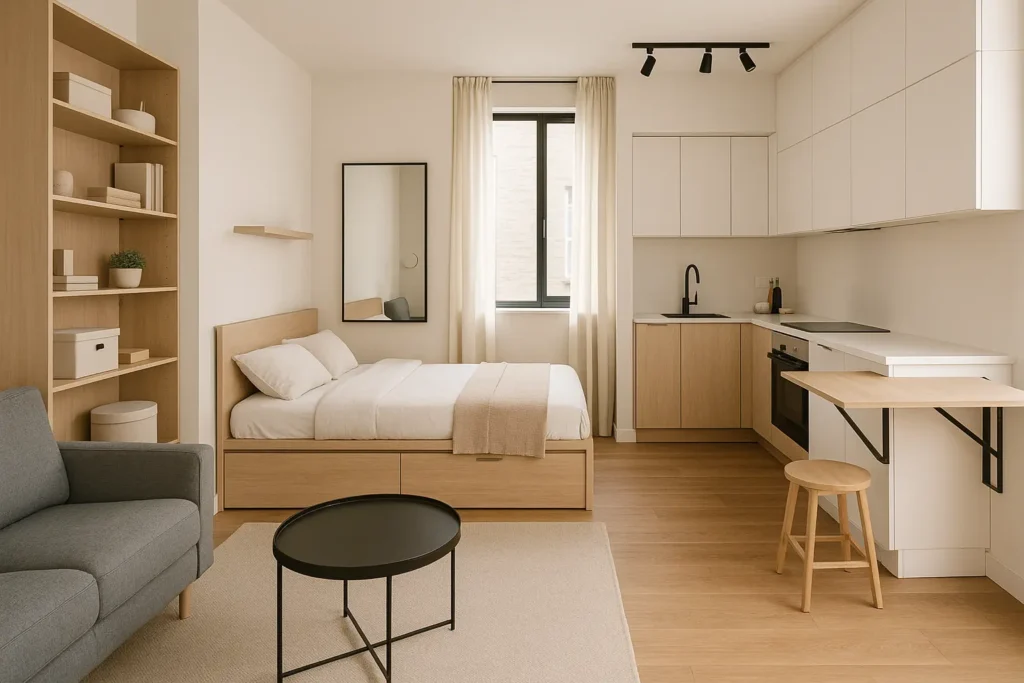Overly dry air in a bedroom can cause many problems for your health and comfort. Between tight skin, an irritated throat, and disrupted sleep, the consequences can be numerous. Are you looking for ways to quickly humidify a bedroom and maintain an ideal humidity level? We've researched all the possible options for you, from natural methods to air humidifiers.
Our article in brief:
Overly dry air in a bedroom is detrimental to health and disrupts sleep comfort. Here's why and how to quickly humidify a bedroom, whether it's a baby's or an adult's room.
- Health impacts : irritation of the mucous membranes, dry cough, tight skin and worsening of asthma symptoms.
- Natural solutions : containers of water near radiators, wet laundry hung out and indoor plants like ferns and palm trees.
- Efficient equipment : cold mist humidifiers, ultrasonic humidifiers or humidifiers with essential oil diffusers.
- Ideal rate : maintain humidity between 40% and 60% for a healthy and comfortable environment.
In this article
Why humidify a room?
Overly dry air in the bedroom causes more than just discomfort. It directly attacks the nasal and throat membranes, causing irritation, congestion, and a persistent dry cough. People with asthma or allergies find their symptoms worsen significantly in a dry environment.
Your skin also suffers! It becomes dry, tight, and can even become itchy. Chapped lips and irritated eyes complete this unenviable picture. Infants and the elderly, with their more fragile skin, are particularly vulnerable to these effects.
Beyond your body, your indoor environment also suffers the consequences of dry airWooden furniture cracks, door frames warp, and static electricity builds up, threatening your electronics. Feeling cold? Normal! Dry air amplifies the chill, prompting you to turn up the heat.
The ideal humidity level for a bedroom is between 40% and 60%. Below this level, you're guaranteed discomfort; above this level, you risk the appearance of equally harmful mold.
How to humidify a room quickly and naturally?
Simple water tricks to improve ambient humidity
To combat dry air without investing in a device, there are a few simple methods. Place containers of water near heat sources in your room. A pretty ceramic bowl placed near the radiator will allow the water to gradually evaporate, naturally humidifying the ambient air. Remember to change the water regularly to prevent stagnation.
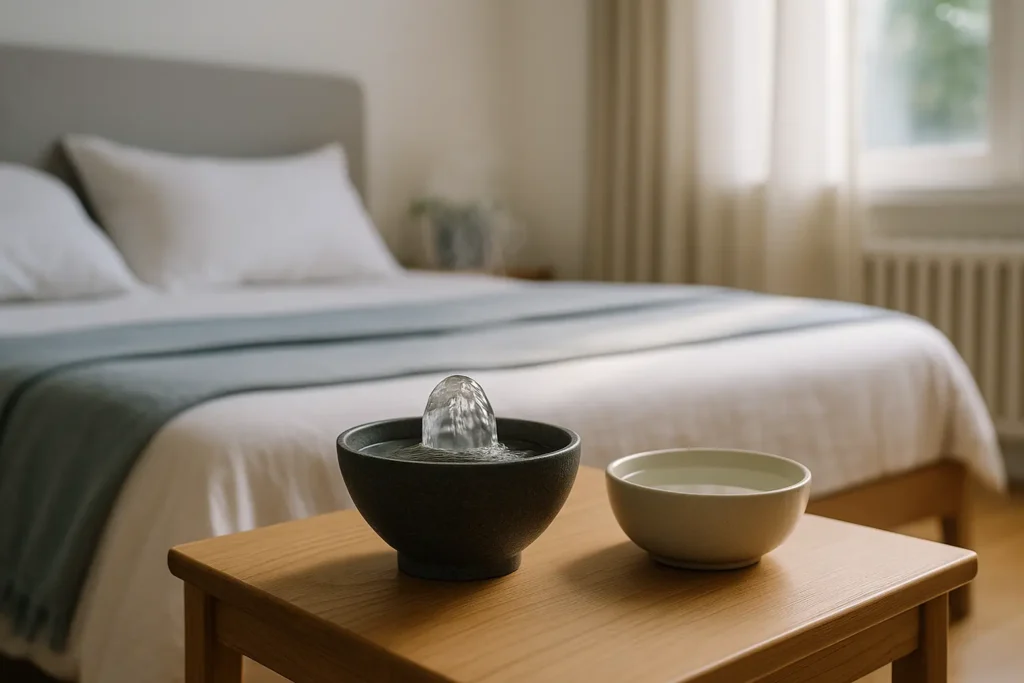
A small decorative fountain not only brings a Zen touch to your colonial style bedroom interior, but also diffuses beneficial humidity. The moving water evaporates more easily, improving the atmosphere in your room while creating a soothing ambiance conducive to sleep.
Damp laundry: an effective solution for humidifying a room
Hanging damp laundry in your room is a time-honored and effective way to increase humidity levels. Hang a few slightly damp towels over your radiator or towel dryer. The gradual evaporation of the water in the fabric will humidify the air while drying your laundry.

You can also gently spray water on your curtains. This fine mist evaporates slowly, diffusing a pleasant humidity without excessively wetting your fabric. Just make sure to ventilate the room well to prevent unwanted mold growth on your fabrics.
Humidify a room with indoor plants
If you don't know how to humidify a room Naturally, plants are a true ally in regulating humidity in your room. Through transpiration, they absorb water through their roots and release it through their leaves, creating a humid microclimate around them.
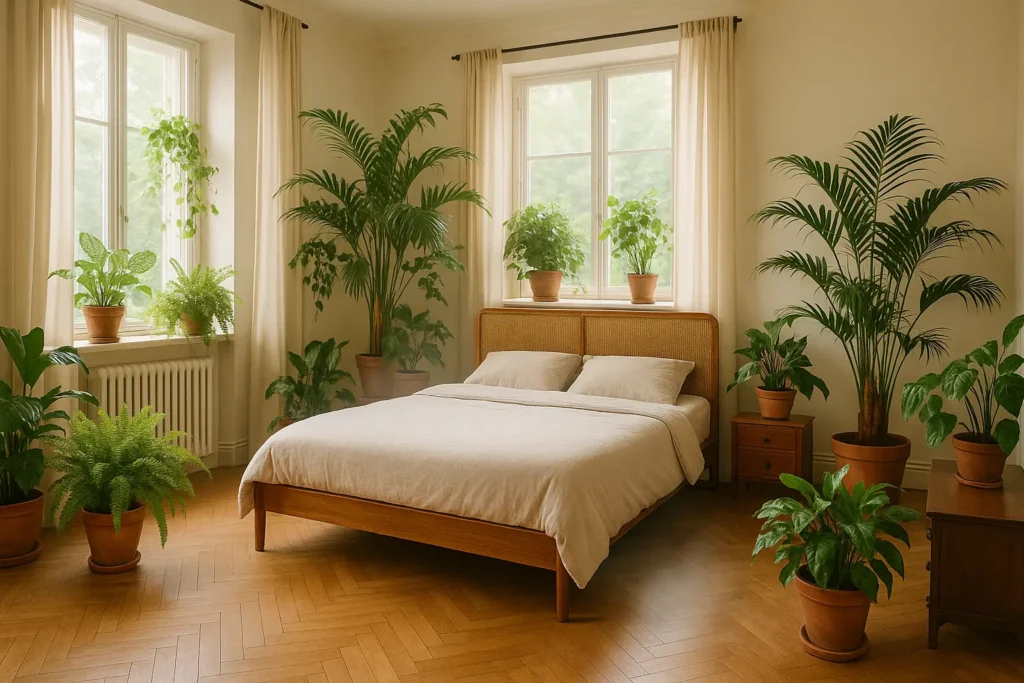
Certain varieties are particularly effective for this task. ferns, especially the Boston Fern, release an impressive amount of humidity. Indoor palms like the Areca or Kentia also transform dry air into a more comfortable environment. Ivy, with its abundant foliage, is also an excellent choice.
| Plant to humidify a room | Humidification level | Interview | Ideal location |
|---|---|---|---|
| Boston Fern | Very high | Moderate | Indirect light |
| Areca Palm | Pupil | Easy | Bright without direct sunlight |
| Ivy | AVERAGE | Easy | Versatile |
| Anthurium | Pupil | Moderate | Bright without direct sunlight |
To maximize the humidifying effect of your plants, group them together to create a more humid area. Place them on a bed of pebbles with about 2 cm of water to increase evaporation. Place them near heat sources, but not too close to avoid drying them out. plants like the jade tree will bring a natural touch to your room while improving air quality.
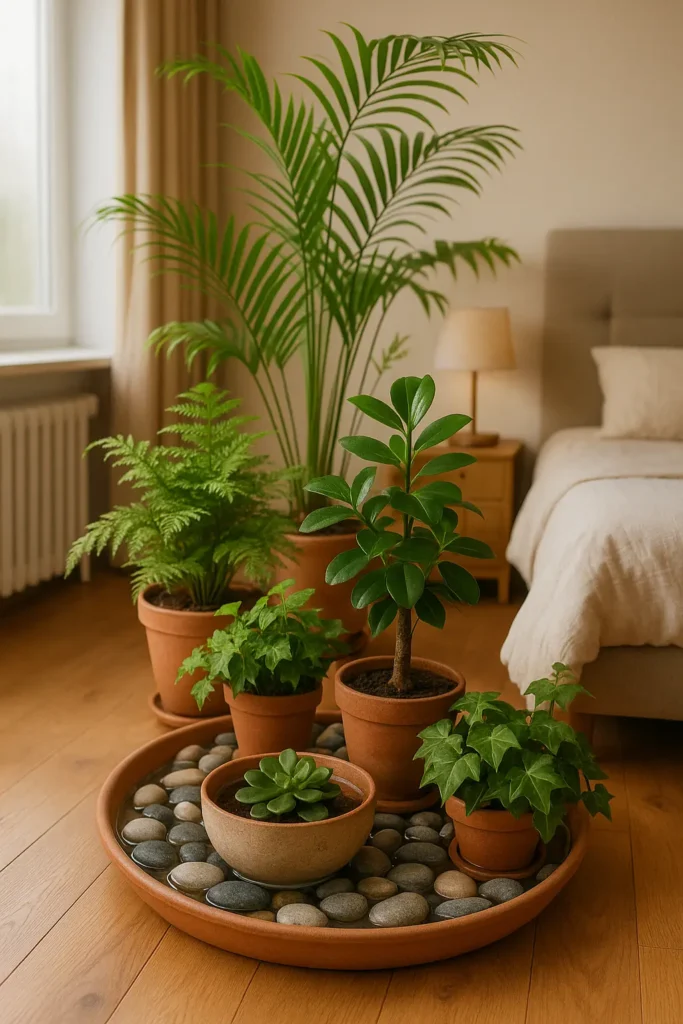
How to humidify a room quickly with alternative methods?
Beyond plants and water containers, other everyday tricks can help naturally humidify your room. After a hot shower, leave the bathroom door open so the steam can diffuse into the adjacent rooms, providing beneficial humidity.
In winter, when the air becomes particularly dry, the "pressure cooker" technique can be a lifesaver. Boil water in a saucepan, then remove the lid and let the steam diffuse into your room. This method provides quick relief from nighttime breathing discomfort.
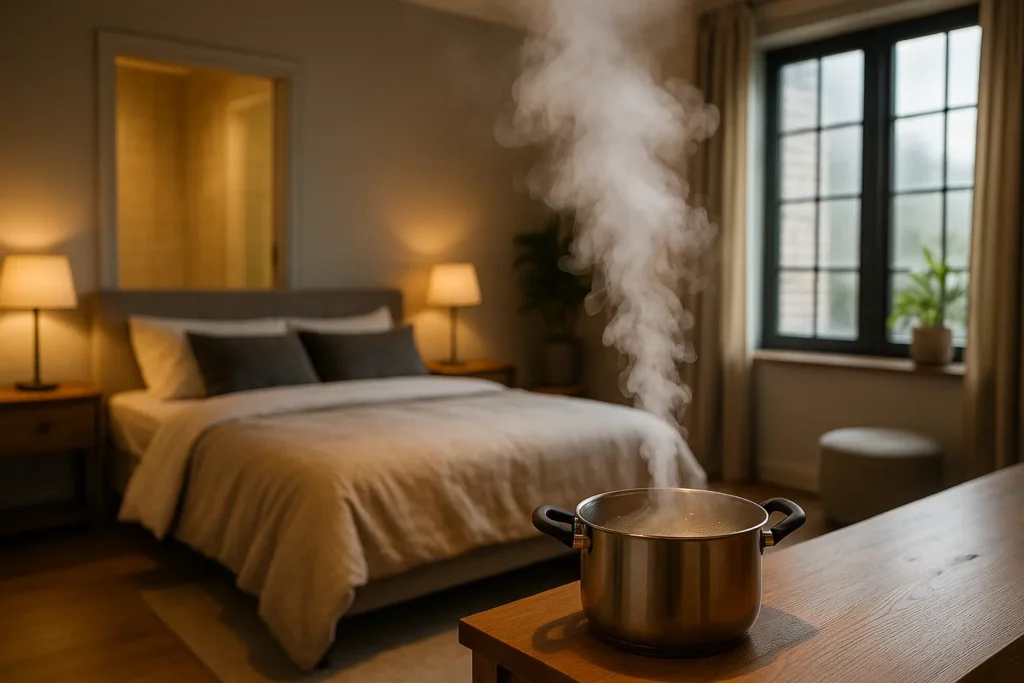
A simple damp sponge placed in a container in the middle of your room gradually releases its moisture. Inexpensive and easy to implement, this trick is perfect for small spaces like children's bedrooms.
Also reduce excessive use of heating, which dries out the air considerably. A moderate temperature around 19°C better preserves natural humidity while ensuring optimal thermal comfort for sleeping.
Choosing the Right Humidifier for Your Bedroom
When natural methods are no longer enough, a humidifier becomes your valuable ally. There are several types, each with its own specific benefits:
- Cool Mist Humidifiers: ideal for children's bedrooms as they pose no risk of burning. They diffuse a cool mist that effectively hydrates the air.
- Ultrasonic humidifiers: very quiet, perfect for bedrooms. Their ultrasonic vibrations create a fine mist while consuming little energy.
- Warm mist humidifiers: they naturally eliminate bacteria through heat, but be careful of the risk of burns, especially with children.
- Models with essential oil diffuser: they combine humidification and aromatherapy for a soothing atmosphere conducive to sleep.
When making your purchase, pay attention to several essential criteria: safety (automatic shut-off function), ease of maintenance, noise level (crucial to avoid disturbing your sleep), and the tank capacity for sufficient autonomy during the night.
How to Use a Humidifier in Your Bedroom
The placement of your humidifier greatly influences its effectiveness. Position it a safe distance from your bed, ideally several feet away, to avoid over-humidification of your bedding. Elevated on a flat, stable surface, it will better diffuse the steam throughout your room.
Use distilled or demineralized water to limit mineral deposits that clog the device and disperse into the air. Change the water daily to prevent stagnation and the proliferation of bacteria.
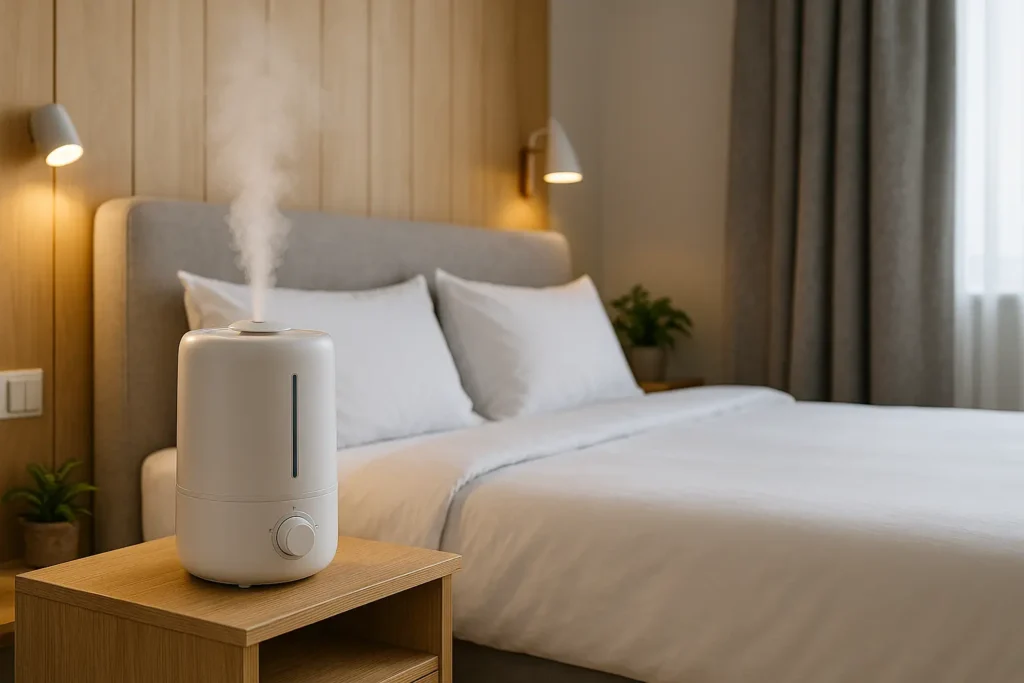
- Clean your appliance every 2-3 days with a mixture of water and white vinegar to remove limescale deposits and germs.
- Regularly check the humidity level with a hygrometer to avoid excess humidity, which would encourage mold.
- Do not run the humidifier continuously; 8-10 hour cycles are usually sufficient.
Winter, when the heating is on full blast, and during episodes of respiratory illness, are the times when your humidifier becomes truly essential.
How to humidify a baby or child's room?
For those who are also wondering How to humidify a baby's room Or for a child, know that babies breathe twice as fast as adults. In addition, their thinner skin makes them particularly sensitive to dry air. Adequate humidity levels between 40% and 60% in their room help prevent nasal irritations, skin problems, and make it easier for them to breathe while they sleep.
For the baby's room, choose a cold mist humidifier which eliminates any risk of burning while providing the necessary humidity. Place it out of reach of curious little hands, away from the bed and toys.
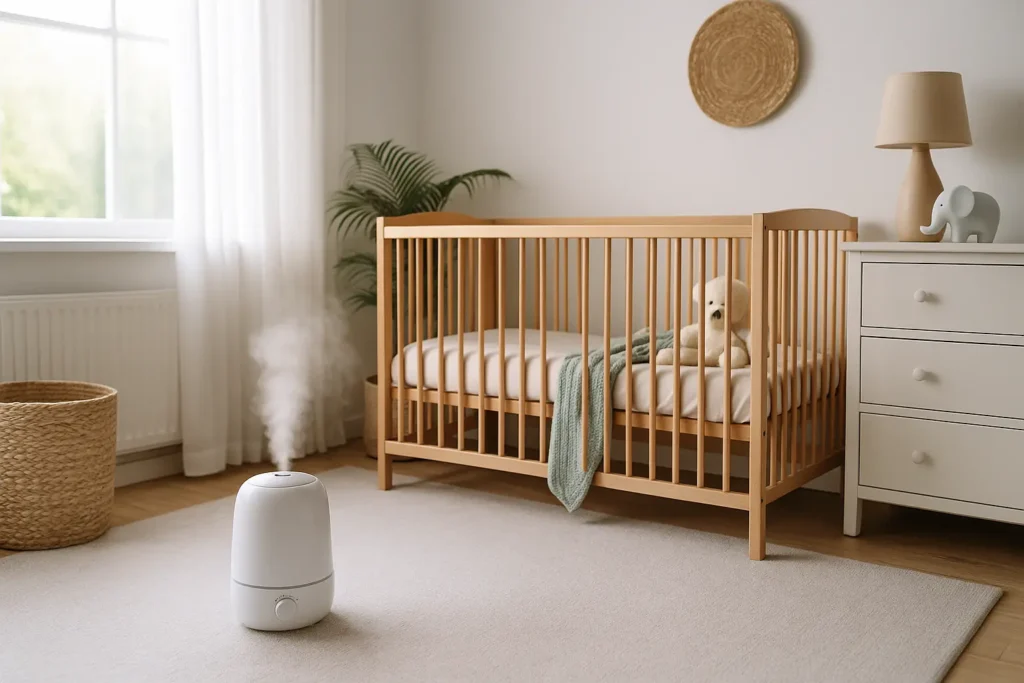
Humidification also helps relieve cold and congestion symptoms, which are common in toddlers. Properly hydrated air helps clear mucus, allowing for easier breathing and better sleep.
Even with a humidifier, don't forget to regularly ventilate your child's room. A 10-minute daily airing, even in winter, refreshes the air and prevents excessive moisture buildup, which can promote the growth of mold, which can be harmful to their respiratory health.
